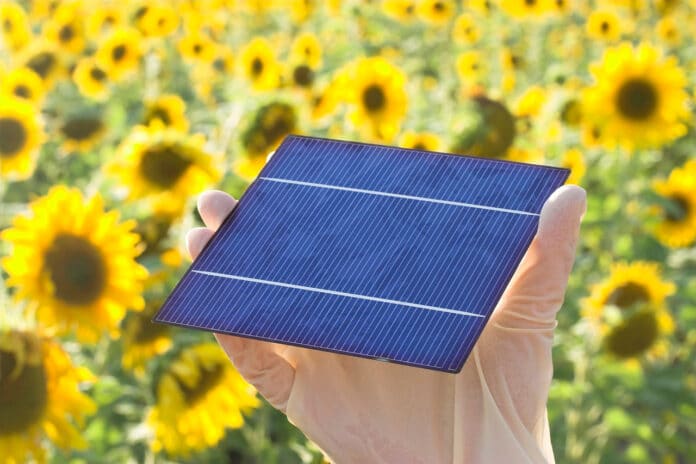A crystalline semiconductor with a perovskite structure is coated with a thin film to create perovskite solar cells (PSCs). Therefore, controlling the thin film’s crystallization behavior to prevent internal defects is crucial for good efficiency.
In particular, depositing an α-formamidinium lead iodide (FAPbI3) perovskite thin films with fewer defects is essential due to their excellent crystallinity and large grain size.
A research team affiliated with UNIST unveiled a way to exceed the 26% efficiency of perovskite solar cells (PSCs). They unveiled a novel method and principle for controlling the crystallinity of perovskite photoactive layer semiconductors. They also developed a technology to manufacture high-efficiency PSCs.
According to scientists, their method could exceed the efficiency of silicon solar cells.
With the help of this technique, perovskite solar cells were created with the best efficiency in the world (26.08%), also recognized by the National Renewable Energy Laboratory (25.73%).
Distinguished Professor Sang Il Seok in the Department of Energy and Chemical Engineering at UNIST said, “Alkylammonium chloride (RACI), which is dequantized at the crystallization stage while combining with perovskite components, was used. This optimal combination with Alkyl could also optimally control the volatilization rate with solvent during the coating and heat treatment of perovskite precursor solution. This combination made it possible to manufacture a perovskite thin film that is dense while extremely flattening the surface of the thin film, and has excellent crystallinity that minimizes internal defects of the crystal.”
Professor Tae Joo Shin, Graduate School of Semiconductor Materials and Devices Engineering at UNIST, said, “This study is very meaningful, as it examines the crystallization process of perovskite with halide anions in real-time through the UNIST-PAL Beamline of Pohang Accelerator Laboratory.”
Professor Seok said, “Through this study, perovskite solar cells with more than 26% efficiency will soon surpass the efficiency of silicon solar cells. This study is the journey’s starting point to achieve more than 27% efficiency.”
Professor Seok has surpassed the 20% efficiency of PSCs for the first time and holds the world’s best-certified efficiency record. In particular, the perovskite heterojunction n-i-p solar cell structure was announced for the first time in the world. Even now, more than 25% of high-efficiency perovskite solar cells all have this structure.
Journal Reference
- Park, J., Kim, J., Yun, H., Paik, M. J., Noh, E., Mun, H. J., Kim, M. G., Shin, T. J., & Seok, S. I. (2023). Controlled growth of perovskite layers with volatile alkylammonium chlorides. Nature, 616(7958), 724-730, (2023). DOI: 10.1038/s41586-023-05825-y
